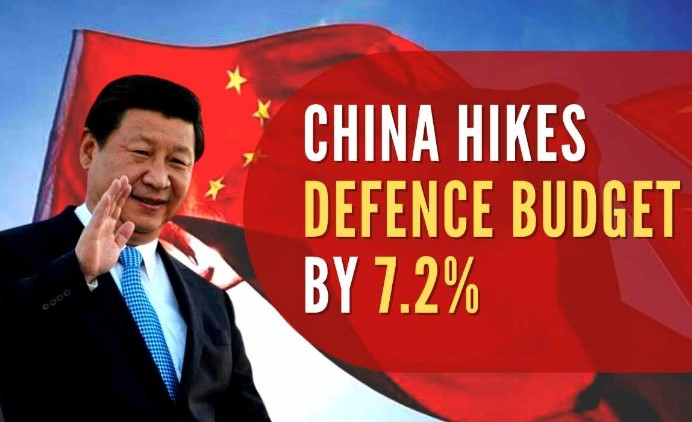Virendra Pandit
New Delhi: With US President Joe Biden and many other American leaders, cutting across party lines, warning against China’s increasing hegemony and belligerence, Beijing has increased its defense budget for 2023 by 7.2 percent despite its lowest economic growth in 25 years in a post-Covid recovery year.
According to the media reports, Beijing announced its draft defense Budget for 2023 on Sunday, with a 7.2 percent rise over last year. The increase was 6.6 percent in 2020, 6.8 percent in 2021, and 7.1 percent in 2022. Its officials called it a “reasonable, restrained increase”.
The proposed draft Budget announced at the opening of the annual session of the National People’s Congress, China’s rubber-stamp Parliament, will see its actual defense spending rising to 1.55 trillion yuan (USD 225 billion).
China aims to achieve the centenary objectives of the People’s Liberation Army (PLA) by August 1, 2027. It has set a target of 2035 for the modernization of its national defense and armed forces.
By the mid-21st century, China hopes to modernize its armed forces into a world-class power, Xinhua reported on August 1, 2022, on the 95th anniversary of PLA’s inception.
The defense budget increase contrasts with the country’s GDP growth, which is the lowest in over 25 years. For 2023, China has set its GDP growth target at about 5 percent, heralding an unprecedented third five-year term for President Xi Jinping, 69, as Beijing faces challenges in the domestic and global economy.
Presenting the Budget, Prime Minister Li Keqiang, the Number 2 ranked leader after Xi, warned of “escalating” external attempts to “suppress, and contain” China. “The term of this government is about to come to a close,” said Li, 67, as he began his 39-page address to NPC, outlining the decade-old achievement of his administration.
Premier Li Keqiang, an economist, is likely to be replaced soon by Xi’s loyalist Li Qiang, the former party boss of Shanghai, to head the new administration to grapple with China’s external and internal challenges.
In view of Beijing’s global designs, and debt-trap diplomacy, many world and regional powers have increased military spending in 2023, partly as a consequence of the Russia-Ukraine conflict and Beijing’s support to Moscow.
The US is topping the list with a military budget of USD 817 billion, which is more than three times China’s defense budget. Japan is planning to spend USD 51 billion on defense, which is 26.3 percent higher than the previous year.
India is raising its capital expenditure spending to USD 21 billion and its overall defense spending by 13 percent to USD 72.5 billion, which is 13.2 percent of all government spending, or 1.97 percent of India’s gross domestic product (GDP).
Other countries like the UK, France, Germany, and Australia are also looking to boost defense spending, the media reported.
In 2022, Japan discarded its post-Second World War principle of only having defensive forces and weaponry. Tokyo has begun procuring offensive missiles, including the US-made Tomahawk cruise missiles that China sees as a threat.

